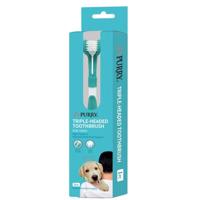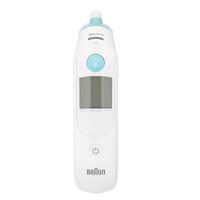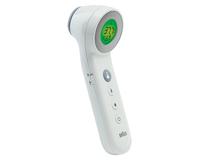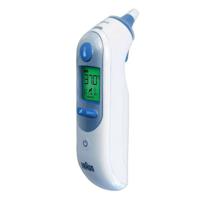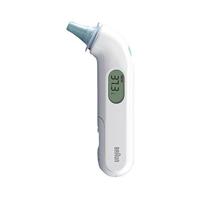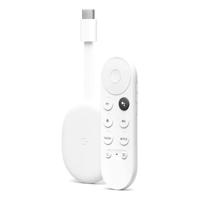About Digital Thermometers
Digital thermometers are easy to read. And that has been an ultimate upgrade from trying to read the mercury line by squinting your eyes. However, that is not the only feature. A digital display is just one out of many specifications. If you are about to buy a digital thermometer, you can try reading a bit about the product.
Usually, personal care medical devices are different from the ones used by experts. You can think of it as commercial or personal products. However, handheld digital thermometers are more or less the same, apart from a few differences. For example, the ones used in the medical field are lightweight and have an ergonomic design, which is a must for all-day use. They even comprise a few additional features. Pulse and respiratory timers are two common ones you can find. You can decide whether you want these features or not in your personal kit. However, additional features are something to probe after you know what type of thermometer you need. You can explore first and decide what fits your purpose.
Parts of digital thermometers
These thermometers, if dismantled, consist of a cap, battery, tip, display screen, electronic circuitry, and power button. The structure is usually of plastic, measuring around 100mm long. The design specifications may vary from product to product. However, apart from understanding these parts, you should also know a bit about the product’s working. Let’s start with what happens when you place the tip of the thermometer close to the body part. A thermistor close to the tip gets activated, which is actually responsible for reading the body temperature. The reason the outer environment’s temperature doesn’t affect the thermistor is that the metal or steel cap prevents such a situation. The thermistor is also responsible for converting the temperature into electrical signals, which you see on the display screen. Simple enough!
Forehead thermometers
With this type of digital thermometer, the temperature checker can maintain the distance with the diseased, and the device also does not have to touch the diseased person. It is a compatible product when mass checking has to be performed. A pandemic breakout is one of the examples we have faced where forehead thermometers have been used everywhere, from malls to airports. This handheld device has a digital display and functions by picking infrared rays produced by the human body. However, the accuracy is sometimes questionable because the surroundings can compromise the results. Sometimes a result is inaccurate when the person is wearing a headwrap. This is the reason forehead thermometers only lay doubt, and further reports are needed to confirm the body’s situation. However, the purpose of mass temperature checking by being contactless is served well by this product.
Electronic ear thermometers
Tympanic thermometers are another name for ear thermometers because they measure the temperature of the tympanic membrane. As the first thing to notice about this product is its accuracy, ear types are pretty accurate. It is important to place the thermometer in the right position, and if it does, it can read a person’s core temperature accurately. However, there may be a compromise with the reading due to certain conditions. A few of them include improper positioning, ear canal’s small size, earwax, or moisture in the ear. Also, a person with ear surgery, infection, any ear sore, or using an ear prescription should not use this thermometer to check their temperature. Whenever you are buying any medical equipment, it is imperative that you read its limitations. Based on what you read, you can make an informed decision.
Oral thermometers
These are the most common handheld thermometers. Forehead and ear thermometers are all digital versions. However, oral ones can have a digital display or mercury line. It is your personal choice to choose one. To use these types, you need to place the oral thermometer under the tongue for 40 seconds or the time mentioned on the packaging or in the manual. There are also products that beep, so you don’t have to monitor the time. The use is pretty simple, but not for those with breathing issues. Elderly and children can restrain from using this product as they can face trouble closing their mouths for long. Like all other thermometers, this product has its limitations too. Also, the reading may be compromised if you have just eaten. So, take measures of that.
Tips on how to buy Digital Thermometer
A thermometer is one of the essential devices in your personal care kit. You should not omit the purchase, and neither you should take it lightly. Although it seems like a small and simple temperature checking device doesn’t need much attention, that may be true if you buy the right one. There are things you should know before buying. Perhaps the tips you read below may look simple, but they can prove to be effective in the long run. A durable and quality led product is what you deserve, and that’s what you grab with a pre-planned approach.
- Accuracy – First of all, you need to pick an authentic manufacturer or brand that can ensure the accuracy of the product. Secondly, accuracy may get compromised with continuous usage. If you think you will be using the thermometer more often than general household requirements, probe more into the product and buy something medical specialists recommend.
- Compatibility – Not every product may suit all ages and body conditions. For example, an ear digital thermometer is not fit for someone who has recently undergone ear surgery or even for a small canal size. There are limitations with every product you must know before buying.
- Measurement Units – Fahrenheit or celsius? You can choose as per your convenience. It may sound like a small thing for the one who can comprehend both the units the same way. If you are only comfortable with one unit of measurement, you might understand this tip. So, keep in mind and read the specifications to confirm your choice.
- Response Time – You cannot hold an infant for a one-minute reading. You either have to buy a pacifier thermometer for them or spend on a product that can display results quickly. Also, for someone with breathing issues, using oral thermometers can be difficult, especially if they take time to measure the body heat. You can either switch to another type of thermometer or buy one that is quick. We hope you get the intent behind the tip.
- Additional features – Backlit display and memory features are two add-ons you can explore. Backlit display for night usage and memory feature to keep a record, the purpose is simple yet effective. You can find more such additional features. A few of them can be for experts in the medical field like pulse and respiratory timers. Or, you can just simply grab a product without additional features. The choice is yours!
These are the tips that may help you with your digital thermometer purchase. Another thing that can narrow down your purchase is a list of brands. With enough information at hand, along with a list of tips and brands, you can make an informed decision. A few brand names to start with include Omron, Xiaomi, Braun, Kinsa, Mabis, Extech, Metene, and Etekcity. You can find them all or even more on our product search engine . Check out now!
Question & Answer
Are digital thermometers accurate?
Yes, the digital display is as accurate as any other technology. However, like every other medical equipment, you need to be aware of its limitations. Digital thermometers can be oral, tympanic, forehead, pacifier, and app-based, among others. Before buying, you need to select the right type based on your body conditions. For example, you should not choose tympanic ones if you have recently undergone ear surgery. Likewise, you should not choose oral thermometers if the product will be used on small children. These are a few considerations before buying, and after buying a product, you need to take precautions to get accurate results. You cannot use an oral thermometer just after eating or drinking as it will compromise the digital display. All in all, the digital or any other thermometer is accurate when you use the right type and when you use it by following all the guidelines.
Can digital thermometers go bad?
You mean if they can display inaccurate results? Then yes, the outside environment affects the results. Forehead thermometers, for instance, can show that you have a fever if the outside temperature is a bit high and you are measuring temperature under the scorching heat. Also, if you are wearing a headwrap, that would affect the temperature around your head, followed by an inaccurate temperature display. However, if the question is about the expiry of digital thermometers, then yes, they expire after three to five years. You can see the digital display starts to become a bit blurry and show different results in the same reading. It is time to replace the product.
What are digital thermometers?
‘Therm’ is the term for heat, and meter is a term that means measures, and in this case, a thermometer measures the heat. For personal use, the product typically measures body heat. However, there are food/meat thermometers or other industrial ones available. For body temperature check, digital and mercury variants are the two most widely available. The digital ones work via metal probes and voltage. In contrast, mercury products work via natural chemical reactions. Out of both, digital thermometers give fast results, are safe for babies, and display results on the screen, meaning easy to read. Oral, rectal, forehead and ear digital thermometers are a few types you can explore and see what fits best to your purpose.
How do digital thermometers work without mercury?
The tube filled with mercury inside a mercury thermometer reacts to the body temperature. It expands and reaches the temperature same as your body’s, which you can read on the stick. In contrast, digital thermometers react to the infrared rays that every human body produces. The infrared measurement could be different in contactless products like forehead thermometers. The circuitry inside the product consists of a thermistor, which is responsible for measuring the infrared rays and converting the reading into digital units. The sensors can be other than a thermistor. This is just one example. After reading the digital display, you can then take preventive measures if required. Other than technical disparities, there is no other difference in digital thermometers as such.


